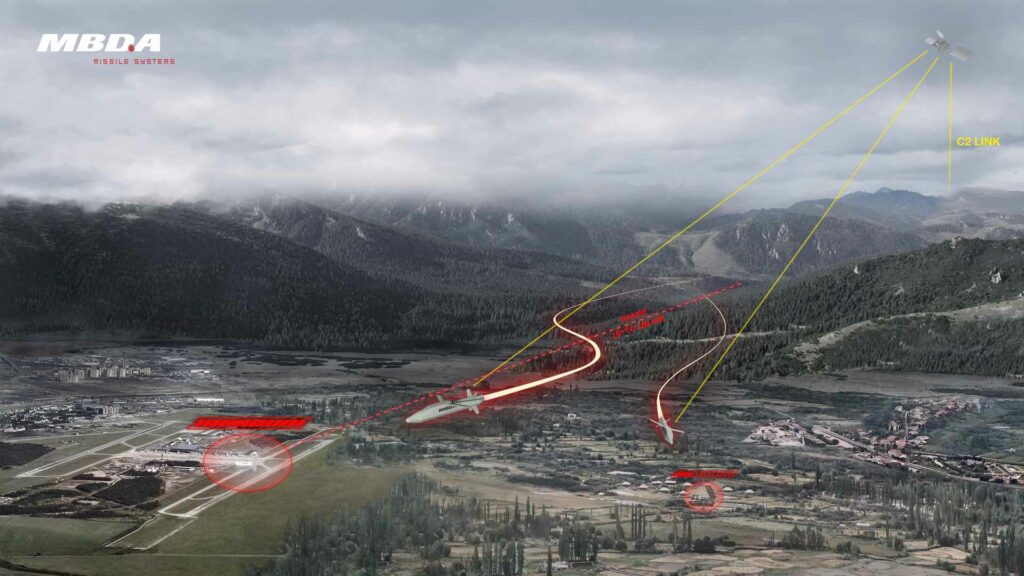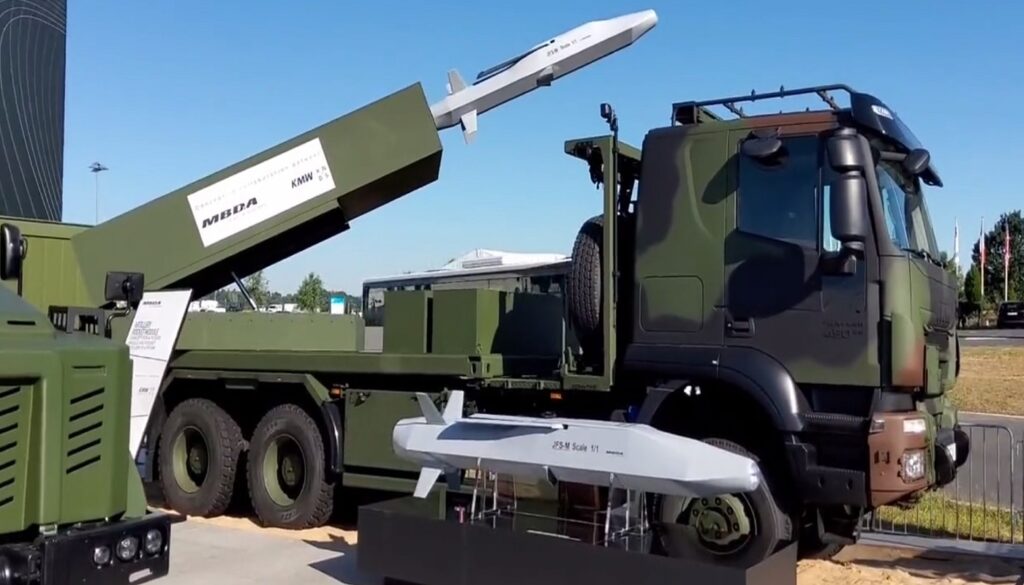Of particular importance are the conclusions drawn from the “Artillery of the Future” conference in Munich, Germany this week. The cause of the European Joint Fire Support Missile System is the product of the development of the leading European missile systems company MBDA. JFS-M (Joint Fire Support Missile) is a surface-to-surface missile launched by multiple missile launchers and intended to engage high-value targets. It has a single 80 kg warhead (SCALP EG has a 120 kg warhead) and a maximum range of 499 km.
It was developed by MBDA in cooperation with Bayern-Chemie, which is also the manufacturer of most of the accelerators used in MBDA missile systems. The JFS-M’s cruise speed will be between Mach 0.5 and Mach 0.9. That is, between 600 and 1000 kilometers per hour. It is not made clear if the weapon’s engine will be throttled by the weapon’s flight control system itself, or by the ground, in order to achieve the maximum possible impact distance which, due to the INF condition, is placed below 500 km.

According to the British defense analyst Nicholas Drummond, the JFS-M is a formidable competitor to the American PrSM (if it is produced for our country) and even at a lower price (https://twitter.com/niccholadrummond/status/1663543857815113730 / photo / 1).
Their guidance system will be a combination of GNSS (European Navigation Satellite System) and INS, while at the same time an image comparator and comparison system (digital images) will be used for the wider area of the target. These images can be used by the JFS-M’s Mission Design System to generate a 3D image of the target area, as well as the topography of the weapon’s path to the designated target or targets, in the least amount of time possible. space. These comprehensive 3D images can be fed into the JFS-M (Image-Based Navigation) navigation system to direct them to the target.
In practice this allows the missile in a GPS contraindicated environment to operate with deadly accuracy and efficiency. In addition, the indisputable advantage of the above projectile is that it can also attack moving targets with a simultaneous update of target data (track, speed) through a data link from another medium such as a UAV or satellite.
The same system will be used to plot the routes that will feed the routing systems of multiple JFS-Ms that will be routed to the same target (Multiple Missile Simultaneous Impact – MMSI), which is equivalent to MRSI – multiple simultaneous effect). The goal is to saturate enemy air defenses by attacking from several different directions, while areas known to have a dense anti-aircraft/missile network can also be avoided through the mission planning system.

The original design called for three JFS-Ms to be incorporated into each of the MARS II launchers. Total of four rifles, instead of two PrSMs or one ATACMS. There is already provision for the development of JFS-M bombers from surface units, but also for the development of an airborne version that, of course, will not have a booster. The JFS-M will use a combination of VLO design features and a low-altitude flight profile that is difficult to detect and intercept. philosophy man–in–the–episode It will also take effect here, so there will be the possibility of interfering on the fly to change the target.
Production of the JFS-M will begin in many different versions equipped with either optoelectronic sensors (EO daytime TV and IR), or even passive electromagnetic and smaller warheads to destroy enemy radars.
In other words, the weapon will be able to independently search for and attack sources of electromagnetic radiation. Of course, not all of these sensors will be integrated into one weapon but in different versions of it that will be suitable for destroying targets of different types. Armored and unarmoured, mobile and fixed.


“Hipster-friendly coffee fanatic. Subtly charming bacon advocate. Friend of animals everywhere.”






More Stories
F-16 crashes in Ukraine – pilot dies due to his own error
Namibia plans to kill more than 700 wild animals to feed starving population
Endurance test for EU-Turkey relations and Ankara with Greece and Cyprus